For the last couple days we have been riding around the streets of Delft, a city in the Netherlands. We have been examining the different bike infrastructure that sets the Netherlands apart from the world in terms of bike safety. In this post I will discuss six different types of bike infrastructure that we have explored. There is definitely a lot that we can learn from these different bike routes and hopefully a lot we can bring back to the States.
Bike Lanes
The first segments of bike infrastructure we looked at were bike lanes. Bike lanes are portions of road that have been designated for only bikes to use. They can either be directly adjacent to travel lanes or separated by buffers like plastic wands or pavement markings. They are one of the cheaper types of bike infrastructure but they do not provide as much comfort as things like cycle tracks. Bike lanes can be dangerous when, especially when the lane travels adjacent to a parking lane. The bike lanes are often located on smaller local roads.
Figure one, Site one, Nassaulaan
Figure one was taken by a bus stop on Nassaulaan. The curb to the left of the bike lane can allow people to get on and off of a bus without entering any oncoming bike traffic. Pedestrians are even given a crosswalk to cross over from the main sidewalk to the bus loading area. The addition of that crosswalk will force cyclists to pay more attention when riding through. I would imagine there is little extra cost that is generated by having this small curb piece since the bike lane would just have switched places with it in any other section of the road. Overall this a really interesting and effective combination of bike lane and public transit yet it seems like such a minor detail on the road.
Figure two, Site two, Julianalaan
The bike lane in figure two is at a busy five way intersection on Julianalaan. This intersection uses pocketed bike lanes to give cyclists better and safer opportunities to get where they need to. The cyclists stay on the right side of the cars that are going the same direction which simulates how any other regular bike lane works. The cars and bikes go at the same time which can be a little stressful, especially while waiting for the green. There is no real better alternative for an intersection of this size. There would be frequent stops for cyclists and they would have to cross multiple streets if the pocket lane didn’t exist. Giving cyclists this protected turn definitely helps keep them safe. In terms of expenditure this doesn’t seem like a design that would cost a lot. Since the bike lanes are just painted in there are no large costs in play.
Figure three, Site four, Buitenhofdreef, Martinus Nijhoflaan
In figure three (Buitenhofdreef, Martinus Nijhoflaan) the bike lane fits comfortably into the road. Cyclists and cars are both given wide lanes so the road doesn’t feel too congested at any point. Cars have a good amount of space to pass cyclists and the bike lane is wide enough to comfortably fit two people across. The design is pretty straight forward and executed well because of the space they have available. There probably would have been enough room for a cycle track to be added to this road instead of having the bike lane but that would have taken more time and money to build than this easily painted lane. The one thing that is a little tough on this road is crossing the street. There is no place for a bike to get out of the bike lane if they need to wait for traffic to cross. As of now a cyclist would either have to hop the curb and turn around in the pedestrian way.
Cycle Tracks
Cycle tracks are a type of bike infrastructure that are separated from the travel lanes, but still travel along the right of way. They are very safe and often are a joy to ride on. There needs to be a lot of space available for a cycle track to be a feasible option to build. They are one of the more expensive facilities to build which can also get in the way of their creation. These cycle tracks are often used on through roads to move bikes quickly to where they want to go.
Figure four, Site five, Voorhofdreef
The first cycle track we saw is shown in figure four (Voorhofdreef). Riding down this track was very enjoyable. There were no obstructions or obstacles in the path and there was no point where I was afraid of veering in to traffic. The very wide medians provided a large buffer between cyclists, traffic, and pedestrians causing everyone to feel more comfortable. With the space they had to work with this was definitely the right choice of bike infrastructure. The trees also added to the stress less, strolling vibe. This was probably a more expensive option than others but it pays off in the end. Giving everyone a more relaxed ride is exactly the right choice for this parkway.
Figure five, Site six, Papsouwselaan
In figure five (Papsouwselaan) another example of a quality cycle track is represented. This cycle track is also a comfortable ride with not a lot of stress, however the amount of pedestrians in the area causes you to keep your guard up. It is a heavy foot traffic area so more attention needs to be paid to areas with crosswalks and such. There is also not a median that separates the pedestrian traffic from the bikes. There is a raised curb which provides some decent protection but a median would work better. Since this road used to be a 4 lane road there was a lot of room to work with when they cut it down, making a cycle track a good choice for this road. Having the large median between the cars and bikes is definitely better than having a median between the bikes and pedestrians but I feel like the median could have been split up to provide a little more protection for pedestrians and bikes.
Figure six, Site 10, Ruys de Beerenbrouckstraat
The final cycle track we saw was the Ruys de Beerenbrouckstraat figure six. The figure demonstrates the most interesting part of this cycle track. In the figure the cycle track has a bit of a kink. This little bump-out gives cars just enough space to be in-between the cycle track and the road. When vehicles are trying to pull off of the road and across the cycle track they don’t need to wait for an opening in both traffic and cyclists to make the turn. This would cause drivers to make fewer rash decisions in terms of trying to cut people off. Since they have enough space to sit comfortably between transportation modes they don’t need to try to get around everyone at once.
Advisory Lanes
Advisory lanes are roadways where vehicles have to share all portions of the space. Bike routes are marked in pavement markings on the edge of the roadway but those are the only pavement markings on the road. Since there are no center line markings cars can adjust how much space is between them and the bike route. When cars are traveling in opposite directions they can go into the bike path and use that space to pass each other, unless there is a cyclist there, then one car needs to yield. These lanes are great in areas where space is limited. This type of road is also only used on roads where there is not a lot of traffic; mostly local roads.
Figure seven, Site eight, Hugo de Grootstraat
The first advisory lane we saw was Hugo de Grootstraat (figure seven). My figure shows an intersection at the end of the street where the advisory lanes intersect another road. The transition from advisory lane to a regular street is done well with no real notice of a change. The bike paths meet in the intersection and seamlessly switch modes. There is also a good amount of space provided for bikes on all portions of the intersection given that half of the lanes are advisory lanes.
Figure eight, Site nine, Adriaan Pauwstraat, Westplantsoen
For the next advisory lane we visited (figure eight, Adriaan Pauwstraat, Westplantsoen) there was a problem with space. Advisory lanes are created when there isn’t a lot of space to work with on a certain road but the problems here seem like they shouldn’t be problems. In a couple portions on this street cars were either parked up on the curb, like this one, or in the bike lane. The parking spots here just did not have enough space for the cars that parked there. Especially in an advisory lane, as a bike, you don’t want to have to dodge parked cars by veering out of your lane. Every car that is parked out of a spot is effectively making the road that much skinnier. This can cause problems if a car is trying to pass while you run into a parked car out of its spot. The sidewalk has ample space and could definitely be taken in a little to help protect the bikes and cars driving by.
Figure nine, Site 11, Molen, Kerkweg Nootdorp
The last advisory lane we saw was Molen, Kerkweg Nootdorp (figure nine). This spot showed off the worst case for scenario for an advisory lane; two cars passing in opposite directions with cyclists on both sides. In the figure the silver car had to slow down and move over into the bike lane to let the black car pass. The silver car had to also make sure to not hit the cyclist in-front of them. The bicyclist moved just about as far over as he could to give the cars enough space to maneuver around him. It was very interesting to watch it all work how it was intended and see the correct actions taken by all parties. The silver car could have hung back a little more so as to not pressure the cyclist but the cyclist kept a cool head and just focused on what was in-front of him.
Quietway
Quietways are similar to roads with bike lanes except for the fact that cars are diverted away from them. Using many different techniques cars are discouraged from driving on these local streets so that cyclists can enjoy a safer and quieter ride (hence the name quietway). Since these roads are not heavily traversed by cars, bicyclists can enjoy more freedom on these routes. Quietways are not very expensive and can be safer than a lot of other options which makes these bike routes very attractive.
Figure 10, Site seven, Buitenwatersloot
We were able to see one quietway on our tour (figure 10, Buitenwatersloot). This quietway was right next to a canal. It used to be an old walking path but has been turned into a mixed use road where cars and bikes must share the way. The road was pretty narrow which made it stressful when cars needed to pass but the road was very minimally traveled by cars so having to avoid them isn’t a huge problem. Even the pedestrian sidewalk doesn’t provide them with much room and they sometimes end up spilling into the street which can cause problems if a car is coming. Over all a cool road to ride down, mostly because of the canal, but tough to ride with cars.
Separated Pathway
Separated pathways are bike routes that do not have to follow the path of a roadway and are totally separated from traffic. These pathways are usually longer continuous routes then most and act in the same way a highway does with cars. They are used to travel far distances to get to more popular areas. They are often very comfortable since there is no car traffic to worry about but they can be very costly depending on when and where they are introduced.
The final piece of infrastructure we saw was one of these separated pathway (N470 bike highway). This was one of the better rides of the two day trip. There was nothing to worry about besides making sure you didn’t get too caught up in the scenery. The path was smooth, had few intersections and those where all with either bikes, pedestrians, or the occasional horse. When going under the highway bridge it didn’t really feel like there was any highway around. There is a good combination of hiding the highway but also using its corridor. Also a highway like that can be a great way to get form far away places.
Service Road
A service road is a road that travels parallel to a main road but acts more as a local road. There are usually frequent connections back to the parent road to that cars can get to where they are going without having to travel on the service road for long. Service roads are great for adding bike facilities because of the low traffic and since they follow the main road they can lead to very popular areas. Depending on what type of bike facilities you add to this road the cost can vary and space can also be a big factor. Sadly we did not have enough time to visit one of these facilities to see it in person.

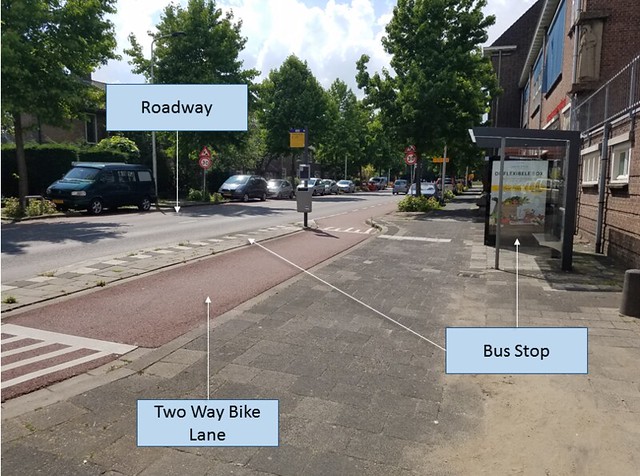
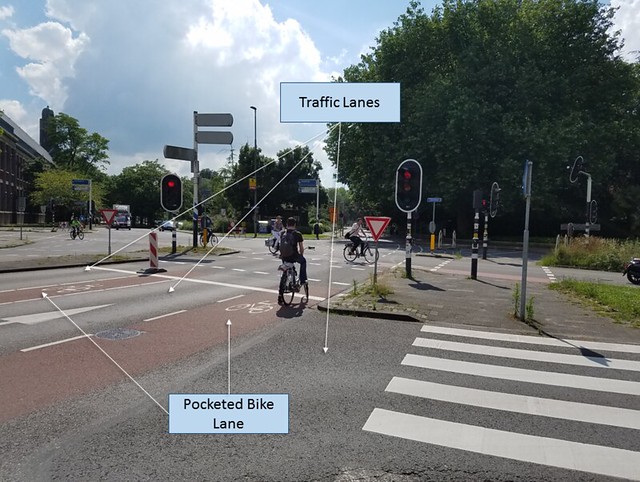

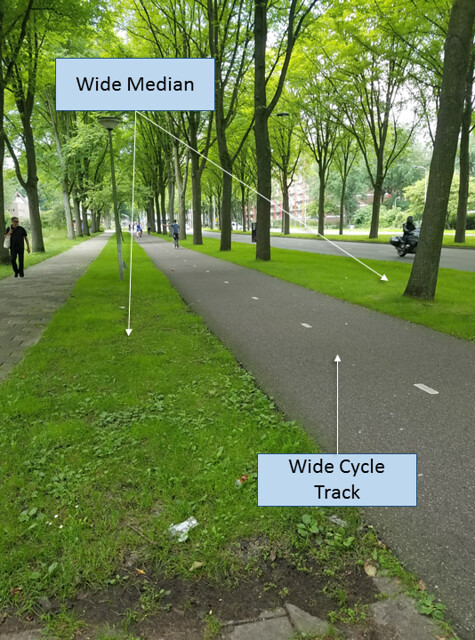


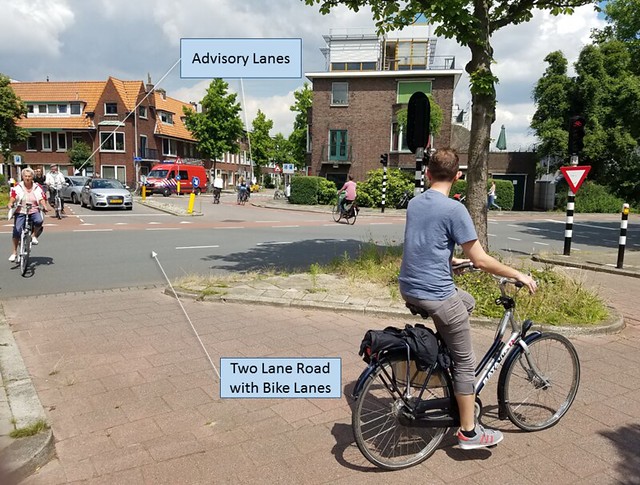
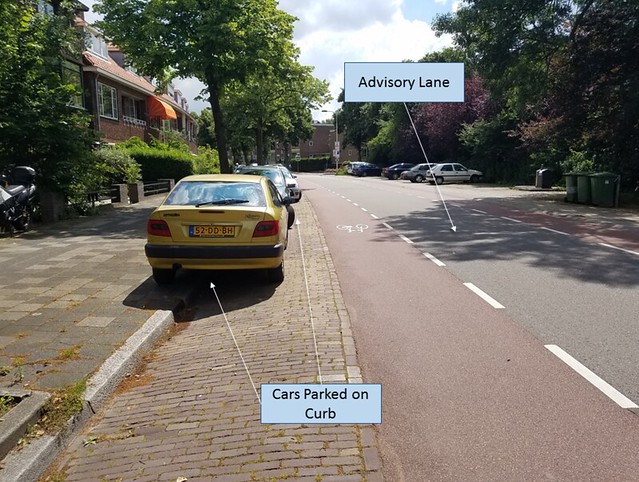
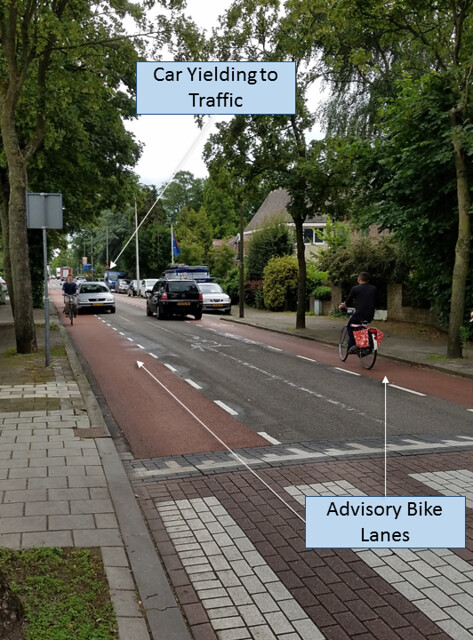
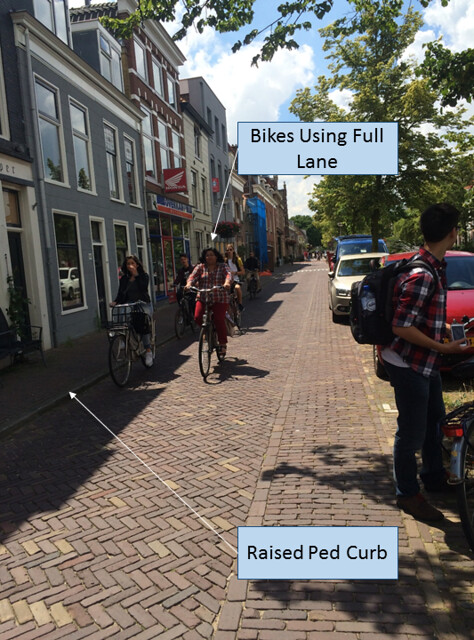
Leave A Comment